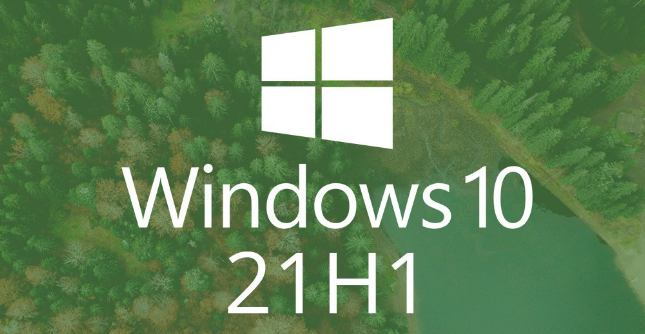UDP是面向无连接的通讯协议,由于通讯不需要连接,所以可以实现广播发送。UDP通讯时不需要接收方确认,属于不可靠的传输,可能会出现丢包现象,实际应用中要求程序员编程验证。
UDP适用于DNS、视频音频等多媒体通信、广播通信(广播、多播)。例如我们常用的QQ,就是一个以UDP为主,TCP为辅的通讯协议。
UDP报文格式如下:
UDP首部有8个字节,由4个字段构成,每个字段都是两个字节,
- 源端口:数据发送方的端口号.
- 目的端口:数据接收方的端口号。
- 长度:UDP数据报的整个长度(包括首部和数据),其最小值为8(只有首部)。
- 校验和:检测UDP数据报在传输中是否有错,有错则丢弃。
可以使用nc发送UDP数据包:echo hello | nc -uv 127.0.0.1 9999。
用tcpdump抓取到的数据包如下(注意先运行tcpdump,然后再执行nc命令):
|
1
2
3
4
5
6
7
8
|
# tcpdump -i lo -X udp port 9999
tcpdump: verbose output suppressed, use -v or -vv for full protocol decode
listening on lo, link-type EN10MB (Ethernet), capture size 262144 bytes
11:19:39.267912 IP localhost.45666 > localhost.distinct: UDP, length 6
0x0000: 4500 0022 5914 4000 4011 e3b4 7f00 0001 E.."Y.@.@.......
0x0010: 7f00 0001 b262 270f 000e fe21 6865 6c6c .....b'....!hell
0x0020: 6f0a o.
... ...
|
说明:
- 源端口:0xb262,十进制的45666。
- 目的端口:0x270f,十进制的9999。
- 长度:0x000e,14个字节的报文长度。
- 校验和:0xfe21。
bio之单播
单播就是一对一通信。
服务器端代码如下:
|
1
2
3
4
5
6
7
8
9
10
11
12
13
14
15
16
17
18
19
20
21
22
|
package com.morris.udp.bio.single;
import java.io.IOException;
import java.net.DatagramPacket;
import java.net.DatagramSocket;
public class Server {
public static void main(String[] args) throws IOException {
DatagramSocket datagramSocket = new DatagramSocket(9999);
byte[] bytes = new byte[1024];
DatagramPacket datagramPacket = new DatagramPacket(bytes, bytes.length);
datagramSocket.receive(datagramPacket);
System.out.println("receive from client: " + new String(bytes));
byte[] req = "hello client".getBytes();
DatagramPacket resp = new DatagramPacket(req, req.length, datagramPacket.getSocketAddress());
datagramSocket.send(resp);
}
}
|
客户端代码如下:
|
1
2
3
4
5
6
7
8
9
10
11
12
13
14
15
16
17
18
19
20
21
|
package com.morris.udp.bio.single;
import java.io.IOException;
import java.net.DatagramPacket;
import java.net.DatagramSocket;
import java.net.InetSocketAddress;
public class Client {
public static void main(String[] args) throws IOException {
DatagramSocket datagramSocket = new DatagramSocket();
byte[] req = "hello server".getBytes();
DatagramPacket datagramPacket = new DatagramPacket(req, req.length, new InetSocketAddress("127.0.0.1", 9999));
datagramSocket.send(datagramPacket);
datagramSocket.receive(datagramPacket);
System.out.println("receive from server: " + new String(datagramPacket.getData()));
}
}
|
客户端和服务端的代码几乎一致,只不过接收和发送数据的顺序不一致,receive和send都欧式阻塞方法。
bio之广播
广播:同一网段所有主机都能接收,前提是端口要开启监听。
只需要将单播的例子中客户端发送数据的IP修改为255.255.255.255即可,具体修改如下:
|
1
|
DatagramPacket datagramPacket = new DatagramPacket(req, req.length, new InetSocketAddress("255.255.255.255", 9999));
|
bio之多播(组播)
多播数据报套接字类用于发送和接收IP多播包。MulticastSocket是一种DatagramSocket,它具有加入Internet上其他多播主机的“组”的附加功能。
多播组通过D类IP地址和标准UDP端口号指定。D类IP地址在224.0.0.0和239.255.255.255的范围内。地址224.0.0.0被保留,不应使用。
可以通过首先使用所需端口创建MulticastSocket,然后调用joinGroup(InetAddress groupAddr)方法来加入多播组。
服务器端代码如下:
|
1
2
3
4
5
6
7
8
9
10
11
12
13
14
15
16
17
18
19
20
21
22
23
|
package com.morris.udp.bio.multicast;
import java.io.IOException;
import java.net.DatagramPacket;
import java.net.DatagramSocket;
import java.net.InetAddress;
import java.net.MulticastSocket;
public class Server {
public static void main(String[] args) throws IOException {
InetAddress group = InetAddress.getByName("228.5.6.7");
MulticastSocket s = new MulticastSocket(6789);
s.joinGroup(group);
byte[] buf = new byte[1000];
DatagramPacket recv = new DatagramPacket(buf, buf.length);
s.receive(recv);
System.out.println("receive : " + new String(buf));
s.leaveGroup(group);
}
}
|
客户端代码如下:
|
1
2
3
4
5
6
7
8
9
10
11
12
13
14
15
16
|
package com.morris.udp.bio.multicast;
import java.io.IOException;
import java.net.*;
public class Client {
public static void main(String[] args) throws IOException {
String msg = "Hello";
InetAddress group = InetAddress.getByName("228.5.6.7");
MulticastSocket s = new MulticastSocket();
s.joinGroup(group);
DatagramPacket hi = new DatagramPacket(msg.getBytes(), msg.length(), group, 6789);
s.send(hi);
s.leaveGroup(group);
}
}
|
NIO实现单播
服务器端代码如下:
|
1
2
3
4
5
6
7
8
9
10
11
12
13
14
15
16
17
18
19
20
21
22
23
24
25
26
27
28
29
|
package com.morris.udp.nio;
import java.io.IOException;
import java.net.InetSocketAddress;
import java.net.SocketAddress;
import java.nio.ByteBuffer;
import java.nio.channels.DatagramChannel;
public class Server {
public static void main(String[] args) throws IOException {
DatagramChannel datagramChannel = DatagramChannel.open();
datagramChannel.bind(new InetSocketAddress(9999));
// datagramChannel.configureBlocking(false);
ByteBuffer byteBuffer = ByteBuffer.allocate(128);
SocketAddress receive = datagramChannel.receive(byteBuffer);
byteBuffer.flip();
byte[] bytes = new byte[byteBuffer.remaining()];
byteBuffer.get(bytes);
System.out.println("receive from client: " + new String(bytes));
byteBuffer.clear();
byteBuffer.put("hello client".getBytes());
datagramChannel.send(byteBuffer, receive);
}
}
|
客户端代码如下:
|
1
2
3
4
5
6
7
8
9
10
11
12
13
14
15
16
17
18
19
20
21
22
23
24
25
26
27
28
|
package com.morris.udp.nio;
import java.io.IOException;
import java.net.InetSocketAddress;
import java.net.SocketAddress;
import java.nio.ByteBuffer;
import java.nio.channels.DatagramChannel;
public class Client {
public static void main(String[] args) throws IOException {
DatagramChannel datagramChannel = DatagramChannel.open();
// datagramChannel.configureBlocking(false);
String req = "hello server";
ByteBuffer byteBuffer = ByteBuffer.allocate(req.length());
byteBuffer.put(req.getBytes());
byteBuffer.flip();
datagramChannel.send(byteBuffer, new InetSocketAddress("127.0.0.1", 9999));
datagramChannel.receive(byteBuffer);
byteBuffer.flip();
byte[] bytes = new byte[byteBuffer.remaining()];
byteBuffer.get(bytes);
System.out.println("receive from server: " + new String(bytes));
}
}
|
Netty实现单播
服务器端代码如下:
|
1
2
3
4
5
6
7
8
9
10
11
12
13
14
15
16
17
18
19
20
21
22
23
24
25
26
27
28
29
30
31
32
33
34
35
36
37
38
39
40
|
package com.morris.udp.netty.single;
import io.netty.bootstrap.Bootstrap;
import io.netty.buffer.Unpooled;
import io.netty.channel.ChannelHandlerContext;
import io.netty.channel.ChannelOption;
import io.netty.channel.SimpleChannelInboundHandler;
import io.netty.channel.nio.NioEventLoopGroup;
import io.netty.channel.socket.DatagramPacket;
import io.netty.channel.socket.nio.NioDatagramChannel;
import io.netty.util.CharsetUtil;
public class Server {
private static final int port = 8899;
public static void main(String[] args) throws InterruptedException {
NioEventLoopGroup group = new NioEventLoopGroup();
try {
Bootstrap bootstrap = new Bootstrap();
bootstrap.group(group).channel(NioDatagramChannel.class)
.handler(new SimpleChannelInboundHandler<DatagramPacket>() {
@Override
protected void channelRead0(ChannelHandlerContext ctx, DatagramPacket msg) throws Exception {
// 接收数据
System.out.println(msg.content().toString(CharsetUtil.UTF_8));
// 发送数据
ctx.writeAndFlush(new DatagramPacket(Unpooled.copiedBuffer("hello client", CharsetUtil.UTF_8), msg.sender()));
ctx.close();
}
});
bootstrap.bind(port).sync().channel().closeFuture().await();
} finally {
group.shutdownGracefully();
}
}
}
|
客户端代码如下:
|
1
2
3
4
5
6
7
8
9
10
11
12
13
14
15
16
17
18
19
20
21
22
23
24
25
26
27
28
29
30
31
32
33
34
35
36
37
38
39
40
41
42
43
44
45
46
|
package com.morris.udp.netty.single;
import io.netty.bootstrap.Bootstrap;
import io.netty.buffer.Unpooled;
import io.netty.channel.Channel;
import io.netty.channel.ChannelHandlerContext;
import io.netty.channel.ChannelOption;
import io.netty.channel.SimpleChannelInboundHandler;
import io.netty.channel.nio.NioEventLoopGroup;
import io.netty.channel.socket.DatagramPacket;
import io.netty.channel.socket.nio.NioDatagramChannel;
import io.netty.util.CharsetUtil;
import java.net.InetSocketAddress;
public class Client {
public static void main(String[] args) throws InterruptedException {
NioEventLoopGroup group = new NioEventLoopGroup();
try {
Bootstrap bootstrap = new Bootstrap();
bootstrap.group(group).channel(NioDatagramChannel.class)
.handler(new SimpleChannelInboundHandler<DatagramPacket>() {
@Override
protected void channelRead0(ChannelHandlerContext ctx, DatagramPacket msg) throws Exception {
// 接收数据
System.out.println(msg.content().toString(CharsetUtil.UTF_8));
ctx.close();
}
});
Channel channel = bootstrap.bind(0).sync().channel();
// 发送数据
channel.writeAndFlush(new DatagramPacket(Unpooled.copiedBuffer("hello server", CharsetUtil.UTF_8), new InetSocketAddress("127.0.0.1", 8899)));
if (!channel.closeFuture().await(30 * 1000)) {
System.err.println("查询超时");
}
} finally {
group.shutdownGracefully();
}
}
}
|
Netty实现广播
只需要将netty实现的单播的客户端代码做如下修改:
1.增加option:
|
1
|
.option(ChannelOption.SO_BROADCAST, true)
|
2.将IP地址修改为广播地址255.255.255.255:
|
1
|
channel.writeAndFlush(new DatagramPacket(Unpooled.copiedBuffer("hello server", CharsetUtil.UTF_8), new InetSocketAddress("255.255.255.255", 8899)));
|
底层实现
recvfrom负责接收UDP数据,其函数声明如下:
|
1
|
ssize_t recvfrom(int sockfd, void *buf, size_t len, int flags, struct sockaddr *src_addr, socklen_t *addrlen);
|
sendto负责发送UDP数据,其函数声明如下:
|
1
|
ssize_t sendto(int sockfd, const void *buf, size_t len, int flags, const struct sockaddr *dest_addr, socklen_t addrlen);
|
下面通过对bio之单播的例子所产生的系统调用进行跟踪:
启动服务器端服务Server:
|
1
|
# strace -ff -o out java Server
|
然后使用nc命令充当客户端进行连接:echo hello | nc -uv 127.0.0.1 9999。
产生的系统调用中关键信息如下:
socket(AF_INET6, SOCK_DGRAM, IPPROTO_IP) = 4
bind(4, {sa_family=AF_INET6, sin6_port=htons(9999), inet_pton(AF_INET6, "::", &sin6_addr), sin6_flowinfo=htonl(0), sin6_scope_id=0}, 28) = 0
recvfrom(4, "hello\\n", 1024, 0, {sa_family=AF_INET6, sin6_port=htons(7361), inet_pton(AF_INET6, "::ffff:127.0.0.1", &sin6_addr), sin6_flowinfo=htonl(0), sin6_scope_id=0}, [28]) = 6
write(1, "receive from client: hello\\n\\0\\0\\0\\0\\0"…, 1045) = 1045
write(1, "\\n", 1)
sendto(4, "hello client", 12, 0, {sa_family=AF_INET6, sin6_port=htons(7361), inet_pton(AF_INET6, "::ffff:127.0.0.1", &sin6_addr), sin6_flowinfo=htonl(0), sin6_scope_id=0}, 28) = 12
可见发送和接收数据确实使用了上面的系统调用,另外上面的系统调用中并没有listen函数,不需要监听端口,再次验证UDP是面向无连接的。
到此这篇关于详解UDP协议格式及在java中的使用的文章就介绍到这了,更多相关java中使用UDP协议内容请搜索快网idc以前的文章或继续浏览下面的相关文章希望大家以后多多支持快网idc!
原文链接:https://blog.csdn.net/u022812849/article/details/109843694
相关文章
- ASP.NET本地开发时常见的配置错误及解决方法? 2025-06-10
- ASP.NET自助建站系统的数据库备份与恢复操作指南 2025-06-10
- 个人网站服务器域名解析设置指南:从购买到绑定全流程 2025-06-10
- 个人网站搭建:如何挑选具有弹性扩展能力的服务器? 2025-06-10
- 个人服务器网站搭建:如何选择适合自己的建站程序或框架? 2025-06-10
- 2025-07-10 怎样使用阿里云的安全工具进行服务器漏洞扫描和修复?
- 2025-07-10 怎样使用命令行工具优化Linux云服务器的Ping性能?
- 2025-07-10 怎样使用Xshell连接华为云服务器,实现高效远程管理?
- 2025-07-10 怎样利用云服务器D盘搭建稳定、高效的网站托管环境?
- 2025-07-10 怎样使用阿里云的安全组功能来增强服务器防火墙的安全性?
快网idc优惠网
QQ交流群
-
2025-05-25 14
-
2025-05-29 104
-
2025-05-25 66
-
微软Windows 10 21H1发布,如何快速升级到新版本
2025-05-27 88 -
2025-06-04 15











